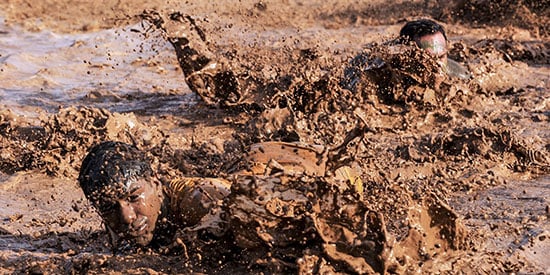Deakin project uses athlete training tools to impact soldier performance
Media releaseA collaboration between Deakin University and the Department of Defence will see Australian soldiers prepared using tools and techniques more commonly associated with elite athletes.
The project, led by Deakin's Centre for Sport Research, is part of the Human Performance Research network (HPRnet), an initiative of the Defence Science and Technology Group and the Australian Army.
Seven Australian universities, including Deakin, are core partners of the network, and many will be represented at the International Congress on Soldiers’ Physical Performance in Melbourne this week.
Co-Director of the Centre for Sport Research and project leader Associate Professor Paul Gastin said Deakin's project would apply the theories of elite athlete performance management to military training, monitoring and modelling of the load, adaptation and performance of soldiers.
"Whether you're a professional athlete or a trained soldier, it's a very physically and mentally demanding job, and maintaining peak performance comes down to the same thing - effectively managing load and recovery," Associate Professor Gastin said.
"The data we will be gathering will help inform the Army's training loads and combat preparation to ensure that Australian soldiers are in peak condition and preventable injuries are reduced."
As part of the research, hundreds of Army recruits will be fitted with wearable technology to measure their physical performance, monitor physiological responses and also provide self-report measures related to stress, fatigue and recovery.
"We know that during basic training there is a high incidence of injury, dropout, and physical and mental stress," Associate Professor Gastin said.
"Like athletes, each soldier is an individual with unique psychophysiological characteristics where one-size-fits-all training programs and interventions do not work.
"But we have the knowledge and technology to modify training to individual requirements."
Researchers are currently trialling the optimum wearable technology for soldiers, with the first round of data collection to begin early next year.
"It has to be something that's practical in a military, real-world context. This is not a lab setting with fancy immobile equipment," Associate Professor Gastin said.
"We need to think about weight, convenience and robustness, as well as something that's going to get us the reliable data we need."
Data generated by the devices will then be analysed by expert number crunchers at the Deakin Software and Technology Innovation Laboratory (DSTIL).
"Being able to combine Deakin's world leading expertise in sport science with our capabilities in data science and technology is one of the great strengths of this project," Associate Professor Gastin said.
"This is a very strategic and collaborative project, both internally here at Deakin, and externally with the HPRnet partnership between the universities involved, the Defence Science and Technology Group and the Australian Army.
"Other arms of Australia's military will be watching closely to see how this works."

